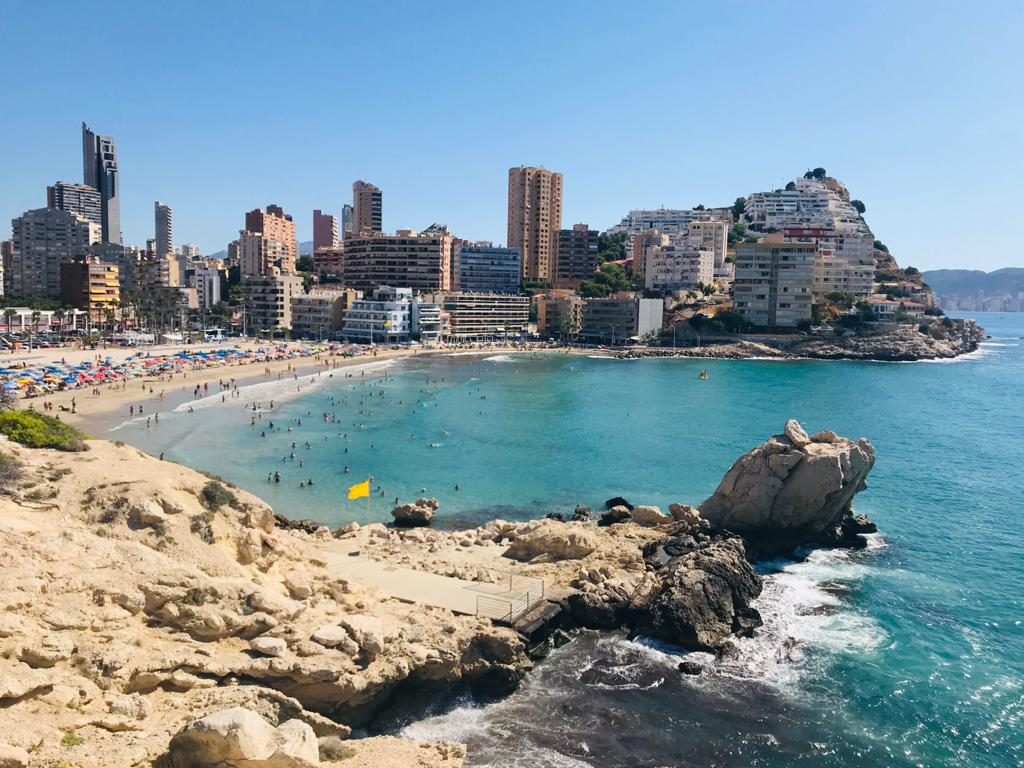A sense of peace and the colours of winter turn the cove into a bucolic, nostalgic place
Cala de Finestrat beach takes on metallic shades in winter. It goes into a slow, unhurried, quiet state. It's intimate, with a bucolic, nostalgic feel, even on sunny days, when its waters become a bright blue colour. Its visitors enjoy that calm, sitting on the terraces of the cafés and restaurants that remain open, talking in whispers without losing sight of the impressive picture in front of them. However, during these months, the peace is sometimes shattered and the spectacle returns. This is when the sea reminds us that the Mediterranean is not always mild and shows its ferocity as waves explode on the rocks, providing amazing images. The foam, the water droplets in the air and the background roar attract the crowds again, this time to immortalise the bravery of the sea on their mobile phones or ride the waves on surfboards. It's just a moment, a short break and then once again, the stillness, the slowness, the calm in the endless sea, with its coming and going of silver, grey and gold tones, as they gradually say goodbye to the coldest season of the year.
In winter, many businesses pull the shutters down. Only those closest to the promenade are open. A multi-product store, with beach chairs open on the pavement ready for sunbathing, reminds you of what's to come. Meanwhile, tourists catch the few rays of sunshine from the terraces surrounding the beach. It's as if they wanted to recall an ancient, almost lost custom from back in the Arab era, when all the diners would sit facing the street. Everyone looks at the sea. They all tip their heads back, as if allowing the sun's rays to penetrate better. A little further on, the same scene is repeated on the benches of Plaça de l'Àmfora. A tourist here, another a little further away, in silence, observing the movement of the water and listening to the background cooing of the pigeons, which now swirl along the sand, a place that in a few months’ time will be packed with beach-goers and out of bounds to them.
Tourists coming to La Cala de Finestrat in winter are retired folk leaving the cold weather in their own cities to live in this warmer climate. They come from northern Spain and central Europe and, in the case of the former, they're usually homeowners, while Europeans rent the apartments scattered along the different streets. When May arrives, they go back to their places of origin until the following year. Most of the hotels are closed and only a couple remain open. Exactly the same happens with restaurants and cafés, which take the opportunity to spruce up their premises before the start of the new summer season.
This stillness allows us to observe the features of La Cala in greater detail. The outlines of the buildings that sprang up in the 1960s, 70s and 80s, at the height of the tourist boom, are an average of six floors high and are mixed in with the small bungalows dotted here and there, without any exact order. The ground floor commercial premises house businesses that have been here for ever, like the pharmacy and the estate agents, alongside others that come and go, depending on how tastes change over time. And at the end, the cove with its fine sand, small, round, inviting, with its charming promenade, surrounded by restaurants, viewpoints and pine forests, all waiting for the arrival of spring, bringing new smells, intense light and the hustle and bustle that comes with another year of life.
Photo: David Revenga














There are no comments